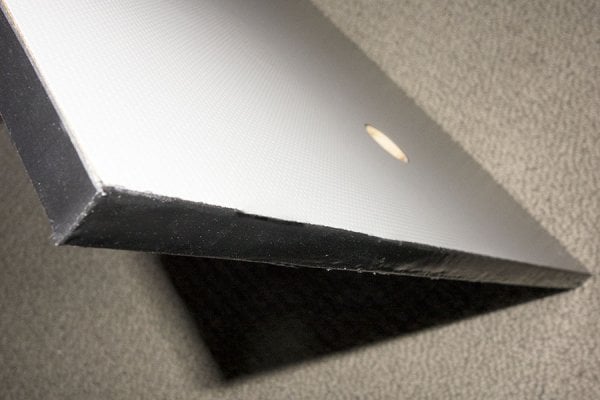I copied this from the fourwh.com website.
-Service -Used Camper Support
It's a pretty good indictor of what to expect to maintain.
USED CAMPER CHECK LIST — BASIC THINGS TO LOOK FOR:
Check to make sure all of the roof screws are tight, if not hand tighten them and re-seal them with a dab of marine grade silicone once you get the camper home. Note: ALL of the newer FWC’s have a one piece, no seam, no screw roof, so you won’t have to worry about re-sealing the roof attachment screws on new Four Wheel Campers.
Check to make sure the roof does not have any holes or tears in the exterior aluminum roof skin (from trees or misc. items poking through it over the years).
Check the soft sides (pop-up up portion) of the camper for unusual wear, tears, or large holes. If there are just small pin holes, those are pretty easy to seal up or patch if needed. Our service department sells patch kits as needed.
Check the inside of the camper roof (head liner) for rips or tears, stains from possible leaks, or for mold.
Check the front and back wooden folding panels (hinged panels that allow the roof to go up & down). Check to see that the rivets are intact and that the wood is not rotten or wet. Note: The newer FWC’s use a black composite folding lift panel in the front & rear of the campers.
Take a look at the aluminum skin all the way around the outside of the camper. Check for scrapes or punctures.
Check the exterior wooded camper base (usually it is painted grey) for any abnormalities.
Check the camper tie down eye nuts in the camper base (outside of camper) to see if they have been over-tightened or might be pulling away / pulling out / crooked or bent. If you do find a bent eye nut, don’t worry, it can usually be easily replaced. Note: the newer FWC’s use a 3 bolt, stainless steel tie down brackets on the camper base. You won’t have to worry about checking these for potential fatigue on the newest FWC’s.
Check the propane box and see if everything looks as it should. Not many things to go wrong with this.
If possible, have the seller turn on items inside & outside of the camper for you.
Example: see if the lights work, see if the furnace lights, see if the refrigerator lights, see if the water pump turns on, etc.
This might not always be possible, but it is always good to poke around and play with things in the camper for a few minutes if you have the opportunity.
Check to see if they have the keys for the rear camper door.
Check to see if the camper jacks look solid and not too bent.
Check to see if the awning cranks (or manually pulls) in & out properly.
Check to see if the roof vent opens and closes and does not have any cracks in the vent lid.
But the best thing to do is just spend a few minutes looking over the camper, sitting inside, and see if you feel comfortable.
Does it look like the owner of the camper has taken care or the camper ?
Or is it abused and beaten on ?
Has the seller made any attempt to clean the camper out and make it look presentable for the new buyer ?
Will the camper fit your truck properly?
Check the used camper camper fit guide here … “
Used Camper Fit Guide“.
If we were looking to buy a used camper for someone on our staff, we would probably look at the following items above, and then just sit inside the camper for a few minutes and ask ourselves things like … “Will I be comfortable camping in this camper? Does it look nice inside ? Is it clean, or just dirty & gross?”
Or, when you are sitting in the camper, are you telling yourself … “Hey, this camper is pretty nice. It is clean. It looks to be well taken care of. Yes, I would probably be very happy & comfortable camping in this camper!”.




